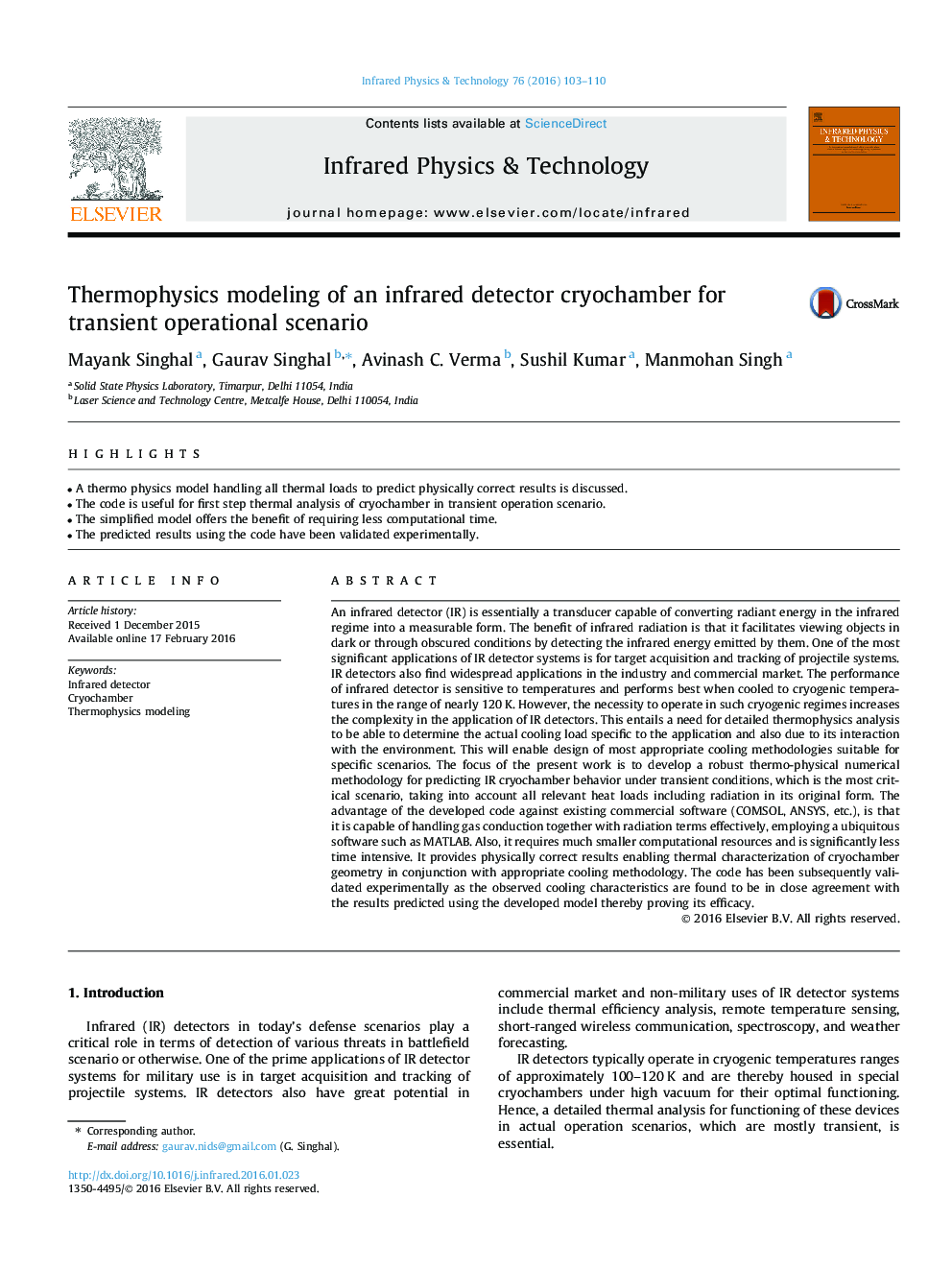| Article ID | Journal | Published Year | Pages | File Type |
|---|---|---|---|---|
| 8146233 | Infrared Physics & Technology | 2016 | 8 Pages |
Abstract
An infrared detector (IR) is essentially a transducer capable of converting radiant energy in the infrared regime into a measurable form. The benefit of infrared radiation is that it facilitates viewing objects in dark or through obscured conditions by detecting the infrared energy emitted by them. One of the most significant applications of IR detector systems is for target acquisition and tracking of projectile systems. IR detectors also find widespread applications in the industry and commercial market. The performance of infrared detector is sensitive to temperatures and performs best when cooled to cryogenic temperatures in the range of nearly 120Â K. However, the necessity to operate in such cryogenic regimes increases the complexity in the application of IR detectors. This entails a need for detailed thermophysics analysis to be able to determine the actual cooling load specific to the application and also due to its interaction with the environment. This will enable design of most appropriate cooling methodologies suitable for specific scenarios. The focus of the present work is to develop a robust thermo-physical numerical methodology for predicting IR cryochamber behavior under transient conditions, which is the most critical scenario, taking into account all relevant heat loads including radiation in its original form. The advantage of the developed code against existing commercial software (COMSOL, ANSYS, etc.), is that it is capable of handling gas conduction together with radiation terms effectively, employing a ubiquitous software such as MATLAB. Also, it requires much smaller computational resources and is significantly less time intensive. It provides physically correct results enabling thermal characterization of cryochamber geometry in conjunction with appropriate cooling methodology. The code has been subsequently validated experimentally as the observed cooling characteristics are found to be in close agreement with the results predicted using the developed model thereby proving its efficacy.
Keywords
Related Topics
Physical Sciences and Engineering
Physics and Astronomy
Atomic and Molecular Physics, and Optics
Authors
Mayank Singhal, Gaurav Singhal, Avinash C. Verma, Sushil Kumar, Manmohan Singh,
